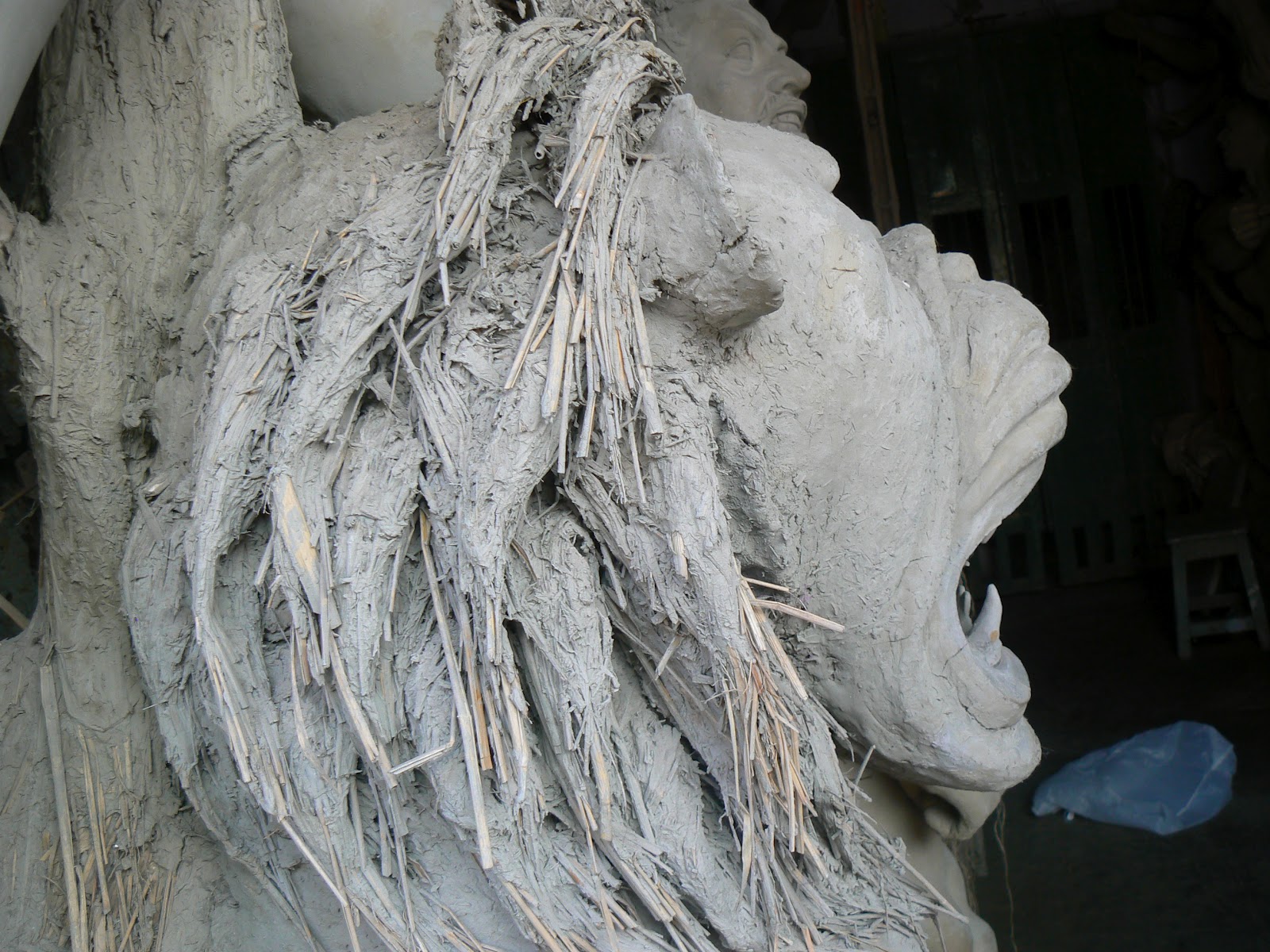I recently joined
Couchsurfing.com, with the plan to meet more people here. On Monday I met up
with my first CS friend, Tori. She showed me around Robindro Sadan, one of the
artistic hubs of the city. First we walked through the information center, behind
which there is a lake with a great view of St. Paul’s Cathedral. Walking around
the side of the lake we came to a complex where several arts buildings are –
two theatres, one for live performances and one for movies, a children’s
theatre, and an art gallery. After looking around the art gallery, we walked
down the street to the Cathedral. Finding it closed, we went and poked around
the Birla Planetarium and then went to watch a fountain show in the park across
the street. All of this was lovely (I think Rabindro Sadan is my second
favorite place in Kolkata, after College Street), except for the fact that Tori
doesn’t really speak Bangla! From the perspective of my language learning, it
was a wasted evening.
On Thursday I had my
first dance lesson. I am learning Classical Indian dance (or the Bengali
variety, maybe) from a girl who has been learning since she was three years
old. As in all first lessons, I was terrible; I hope that I improve quickly.
In our last class on Friday,
we learned how to play a board game (it was a lot like Parcheesi). We were
split into two teams, and Steve and I won. Afterward we visited Thakur Bari, or
the Tagore home. It is now a museum dedicated to Rabindranath especially,
although his father and other important family members are also highlighted. The
house is huge, but must have been very nice when people were actually living in
it. Two rooms made a big impression on me: first, the room where Rabindranath
died, which is a beautiful room, with an inlaid marble floor and flowers in
front of a picture of him; and second, the Tagore birthing room. This is a
small room where women were taken when they went into labor, and then where
they were kept for 21 days afterward (according to my teacher). What struck me
about this room is that it was tiny – the size of a small walk-in closet. I asked
why the woman was kept in such a tiny room for so long, and my teacher said
that the mortality rate was so high that they wanted to keep them away from the
rest of the family.
On Saturday I spent 12
hours running around Kolkata. My first stop was the Foreign Tourists’ Board,
where I was going to buy train tickets so I can go out of town for the few days
after Puja. My plan was to try for Puri; if that wasn’t available, Benaras; if
that wasn’t available, Bodh Gaya. Luckily, I got the ticket to Puri, and there
were no problems getting it, except for the fact that I had to wait for three
hours before I got to the counter. Afterward, I met up with another friend from
Couchsurfing, Prithvi, who showed me around the area. I had walked to the
Tourists’ board from the Central metro stop, so I on had gotten a pretty good
idea of the layout of BBD Bagh (the West Bengal government district). Prithvi
first took me to get some organic ice cream which, to my surprise, was sold out
of a terracotta pot full of ice on the street behind the Writers’ Building
(where the government offices are located). Saffron ice cream is surprisingly
delicious. Afterward, we took a bus to the Marble Palace, an old mansion filled
with really expensive European works of art (and inlaid marble floors
throughout). For lunch, he took me to a street vendor that sells Pau bheja, a
street food I had never seen before. It is vegetables (including tomatoes, bell
peppers, and green onions) mixed with spices and cooked into a sauce, served
with some hot buttered bread. In India, street food is generally served in organic,
disposable containers, like leaves or terracotta cups. The Pau bheja was served
in plates made out of leaves stitched together and pressed into shape. The tea
that we had next (at a stand across the street) was served in terracotta cups.
Saying goodbye to Prithvi, I went to the Indian museum. The museum houses a
large collection of archaeological discoveries, especially from the Buddhist
period, and some paintings by Abanindranath and Rabindranath Tagore and
Nandalal Bose. One of the things that annoy me, however, is that in India you
have to check your bag pretty much everywhere you go. This is true for museums
and stores. I hate having to leave my bag outside, and having to carry my
important things (like my wallet) in my hand the entire time. After leaving the
Indian Museum, I went to Rabindro Sadan and shopped around in a book fair. I
don’t understand why, when people ask me if I can read Bengali, they do that in
English. If I have been standing in your shop for fifteen minutes looking at
the Bengali titles, I think it’s pretty obvious; also, if I can read Bengali
why would I not be able to speak it? Finally, at six PM I went to a folk music
performance that was held in the Rabindro Sadan theater. It was very good,
although it mostly focused on drum performances. There’s only so long I can
enjoy drumming before it starts to get boring. There was, however, a very good
dotara player as well as some interesting percussion instruments (a large
terracotta jug), something that may have been a didgeridoo, and one song
performed by a guy making noises with his mouth (as in, hitting his cheeks to
make percussion noises).








